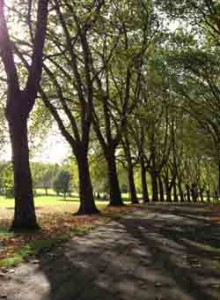
More evidence that low-calorie sweeteners are bad for your health
Studies show that artificial sweeteners can raise the risk of hypertension, metabolic syndrome, type 2 diabetes and heart disease, including stroke.

Natural Health News — A major new assessment in the US has shown that trees are saving lives and preventing acute respiratory symptoms – and therefore saving everyone money.
If you live in an urban area the benefits are greater.
Airborne pollutants are associated with a wide range of negative health impacts on the lungs, heart, circulatory and neurological systems.
Focussing on the respiratory effects, scientists working with the US Forest considered four pollutants for which the US EPA has established air quality standards: nitrogen dioxide (NO2), ozone (O3), sulphur dioxide, and particulate matter less than 2.5 microns (PM2.5) in diameter.
They then calculated that trees are saving more than 850 human lives a year and preventing 670,000 incidents of acute respiratory symptoms.
Writing in the journal Environmental Pollution the researchers says that while trees’ ability to remove pollution equated to an average air quality improvement of less than 1%, the impacts of that improvement are substantial, cutting healthcare and other costs by around $7 billion every year.
Putting a value on nature
The study is unique because while various studies have estimated pollution removal by trees most do not directly link the removal with improved human health effects nor do they put a monetary value on those benefits.
In this study the greatest amount of pollution removal was for O3 and NO2, while the greatest value in terms of savings on healthcare costs was associated with removal was for PM2.5 and O3.
Tree cover was associated with a national reduction of more than 850 deaths. In the US there are around 130,000 PM2.5-related deaths and 4,700 ozone-related deaths each year. Although the life-saving effect of having trees in your area may seem small (approximately .6%) it amounts to a big saving in terms of healthcare and other costs.
Based on the current number of trees in the US the researchers calculate that these helped reduce more than 670,000 incidences of acute respiratory symptoms, 430,000 incidences of asthma exacerbation and 200,000 days off school.
The benefits of tree cover vary from area to area. Tree cover in the US is estimated at 34.2% of the land, but varies from 2.6% in North Dakota to 88.9% in New Hampshire. States with the greatest pollution removal rates were California, Texas and Georgia, while states which saw the greatest savings in healthcare and other costs were Florida, Pennsylvania and California.
Big benefits for city dwellers
The scientists found that while pollution removal is substantially higher in rural areas than in urban areas, the effects on human health are substantially greater in urban areas than rural areas.
For instance, because human populations are more concentrated in urban areas, the health effects of trees, and their value in terms of preventing disease in urban areas accounts for around 68% of the $7 billion savings.
Airborne pollutants are associated with a wide range of negative health impacts on the lungs, heart, circulatory and neurological systems.
“We found that in general, the greater the tree cover, the greater the pollution removal, and the greater the removal and population density, the greater the value of human health benefits.” said researcher Dave Nowak of the US Forest Service’s Northern Research Station.
With more than 80% of Americans living in urban area, this research underscores how essential urban forests are for human wellbeing.

Please subscribe me to your newsletter mailing list. I have read the
privacy statement